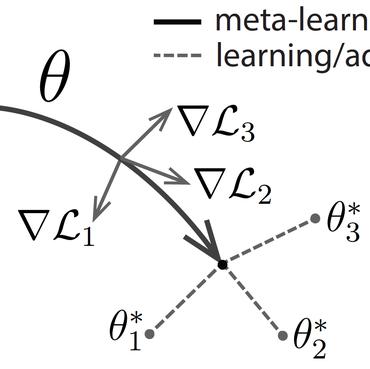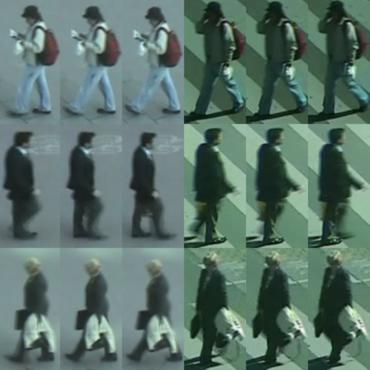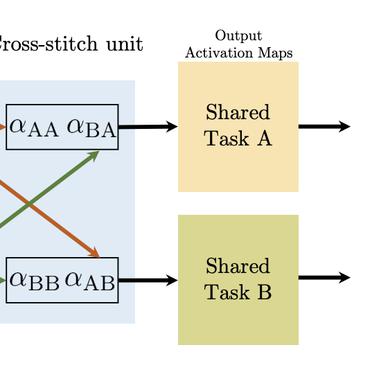Search Results for author: Qiuhong Ke
Found 39 papers, 3 papers with code
UPAM: Unified Prompt Attack in Text-to-Image Generation Models Against Both Textual Filters and Visual Checkers
no code implementations • 18 May 2024 • Duo Peng, Qiuhong Ke, Jun Liu
Text-to-Image (T2I) models have raised security concerns due to their potential to generate inappropriate or harmful images.
Sequential Amodal Segmentation via Cumulative Occlusion Learning
no code implementations • 9 May 2024 • Jiayang Ao, Qiuhong Ke, Krista A. Ehinger
To fully understand the 3D context of a single image, a visual system must be able to segment both the visible and occluded regions of objects, while discerning their occlusion order.
Sports-QA: A Large-Scale Video Question Answering Benchmark for Complex and Professional Sports
1 code implementation • 3 Jan 2024 • Haopeng Li, Andong Deng, Qiuhong Ke, Jun Liu, Hossein Rahmani, Yulan Guo, Bernt Schiele, Chen Chen
Reasoning over sports videos for question answering is an important task with numerous applications, such as player training and information retrieval.
Answering from Sure to Uncertain: Uncertainty-Aware Curriculum Learning for Video Question Answering
no code implementations • 3 Jan 2024 • Haopeng Li, Qiuhong Ke, Mingming Gong, Tom Drummond
While significant advancements have been made in video question answering (VideoQA), the potential benefits of enhancing model generalization through tailored difficulty scheduling have been largely overlooked in existing research.
CLIP Guided Image-perceptive Prompt Learning for Image Enhancement
no code implementations • 7 Nov 2023 • Weiwen Chen, Qiuhong Ke, Zinuo Li
Image enhancement is a significant research area in the fields of computer vision and image processing.
Unsupervised Domain Adaptation via Domain-Adaptive Diffusion
no code implementations • 26 Aug 2023 • Duo Peng, Qiuhong Ke, Yinjie Lei, Jun Liu
Unsupervised Domain Adaptation (UDA) is quite challenging due to the large distribution discrepancy between the source domain and the target domain.
Diffusion-based Image Translation with Label Guidance for Domain Adaptive Semantic Segmentation
no code implementations • ICCV 2023 • Duo Peng, Ping Hu, Qiuhong Ke, Jun Liu
Translating images from a source domain to a target domain for learning target models is one of the most common strategies in domain adaptive semantic segmentation (DASS).
GradMDM: Adversarial Attack on Dynamic Networks
no code implementations • 1 Apr 2023 • Jianhong Pan, Lin Geng Foo, Qichen Zheng, Zhipeng Fan, Hossein Rahmani, Qiuhong Ke, Jun Liu
Dynamic neural networks can greatly reduce computation redundancy without compromising accuracy by adapting their structures based on the input.
Progressive Channel-Shrinking Network
no code implementations • 1 Apr 2023 • Jianhong Pan, Siyuan Yang, Lin Geng Foo, Qiuhong Ke, Hossein Rahmani, Zhipeng Fan, Jun Liu
Currently, salience-based channel pruning makes continuous breakthroughs in network compression.
Amodal Intra-class Instance Segmentation: Synthetic Datasets and Benchmark
1 code implementation • 12 Mar 2023 • Jiayang Ao, Qiuhong Ke, Krista A. Ehinger
Images of realistic scenes often contain intra-class objects that are heavily occluded from each other, making the amodal perception task that requires parsing the occluded parts of the objects challenging.
Unified Pose Sequence Modeling
no code implementations • CVPR 2023 • Lin Geng Foo, Tianjiao Li, Hossein Rahmani, Qiuhong Ke, Jun Liu
We propose a Unified Pose Sequence Modeling approach to unify heterogeneous human behavior understanding tasks based on pose data, e. g., action recognition, 3D pose estimation and 3D early action prediction.
DiffPose: Toward More Reliable 3D Pose Estimation
1 code implementation • CVPR 2023 • Jia Gong, Lin Geng Foo, Zhipeng Fan, Qiuhong Ke, Hossein Rahmani, Jun Liu
Monocular 3D human pose estimation is quite challenging due to the inherent ambiguity and occlusion, which often lead to high uncertainty and indeterminacy.
 Ranked #11 on
3D Human Pose Estimation
on MPI-INF-3DHP
Ranked #11 on
3D Human Pose Estimation
on MPI-INF-3DHP
Unified Multi-View Orthonormal Non-Negative Graph Based Clustering Framework
no code implementations • 3 Nov 2022 • Liangchen Liu, Qiuhong Ke, Chaojie Li, Feiping Nie, Yingying Zhu
In this paper, we formulate a novel clustering model, which exploits the non-negative feature property and, more importantly, incorporates the multi-view information into a unified joint learning framework: the unified multi-view orthonormal non-negative graph based clustering framework (Umv-ONGC).
NEURAL MARIONETTE: A Transformer-based Multi-action Human Motion Synthesis System
no code implementations • 27 Sep 2022 • Weiqiang Wang, Xuefei Zhe, Qiuhong Ke, Di Kang, Tingguang Li, Ruizhi Chen, Linchao Bao
Along with the novel system, we also present a new dataset dedicated to the multi-action motion synthesis task, which contains both action tags and their contextual information.
Adaptive Local-Component-aware Graph Convolutional Network for One-shot Skeleton-based Action Recognition
no code implementations • 21 Sep 2022 • Anqi Zhu, Qiuhong Ke, Mingming Gong, James Bailey
Skeleton-based action recognition receives increasing attention because the skeleton representations reduce the amount of training data by eliminating visual information irrelevant to actions.
Dynamic Spatio-Temporal Specialization Learning for Fine-Grained Action Recognition
no code implementations • 3 Sep 2022 • Tianjiao Li, Lin Geng Foo, Qiuhong Ke, Hossein Rahmani, Anran Wang, Jinghua Wang, Jun Liu
We design a novel Dynamic Spatio-Temporal Specialization (DSTS) module, which consists of specialized neurons that are only activated for a subset of samples that are highly similar.
IGFormer: Interaction Graph Transformer for Skeleton-based Human Interaction Recognition
no code implementations • 25 Jul 2022 • Yunsheng Pang, Qiuhong Ke, Hossein Rahmani, James Bailey, Jun Liu
Human interaction recognition is very important in many applications.
 Ranked #2 on
Human Interaction Recognition
on SBU
Ranked #2 on
Human Interaction Recognition
on SBU
ERA: Expert Retrieval and Assembly for Early Action Prediction
no code implementations • 20 Jul 2022 • Lin Geng Foo, Tianjiao Li, Hossein Rahmani, Qiuhong Ke, Jun Liu
Early action prediction aims to successfully predict the class label of an action before it is completely performed.
Image Amodal Completion: A Survey
no code implementations • 5 Jul 2022 • Jiayang Ao, Qiuhong Ke, Krista A. Ehinger
The main purpose of this survey is to provide an intuitive understanding of the research hotspots, key technologies and future trends in the field of image amodal completion.
A Survey of Automated Data Augmentation Algorithms for Deep Learning-based Image Classification Tasks
no code implementations • 14 Jun 2022 • Zihan Yang, Richard O. Sinnott, James Bailey, Qiuhong Ke
To mitigate such problem, a novel direction is to automatically learn the image augmentation policies from the given dataset using Automated Data Augmentation (AutoDA) techniques.
Iterative Geometry-Aware Cross Guidance Network for Stereo Image Inpainting
no code implementations • 8 May 2022 • Ang Li, Shanshan Zhao, Qingjie Zhang, Qiuhong Ke
The IGGNet contains two key ingredients, i. e., a Geometry-Aware Attention (GAA) module and an Iterative Cross Guidance (ICG) strategy.
Meta Agent Teaming Active Learning for Pose Estimation
no code implementations • CVPR 2022 • Jia Gong, Zhipeng Fan, Qiuhong Ke, Hossein Rahmani, Jun Liu
The existing pose estimation approaches often require a large number of annotated images to attain good estimation performance, which are laborious to acquire.
Spatial-Temporal Transformer for 3D Point Cloud Sequences
no code implementations • 19 Oct 2021 • Yimin Wei, Hao liu, TingTing Xie, Qiuhong Ke, Yulan Guo
We test the effectiveness our PST2 with two different tasks on point cloud sequences, i. e., 4D semantic segmentation and 3D action recognition.
The Multi-Modal Video Reasoning and Analyzing Competition
no code implementations • 18 Aug 2021 • Haoran Peng, He Huang, Li Xu, Tianjiao Li, Jun Liu, Hossein Rahmani, Qiuhong Ke, Zhicheng Guo, Cong Wu, Rongchang Li, Mang Ye, Jiahao Wang, Jiaxu Zhang, Yuanzhong Liu, Tao He, Fuwei Zhang, Xianbin Liu, Tao Lin
In this paper, we introduce the Multi-Modal Video Reasoning and Analyzing Competition (MMVRAC) workshop in conjunction with ICCV 2021.
Adversarial Interaction Attacks: Fooling AI to Misinterpret Human Intentions
no code implementations • ICML Workshop AML 2021 • Nodens Koren, Xingjun Ma, Qiuhong Ke, Yisen Wang, James Bailey
Understanding the actions of both humans and artificial intelligence (AI) agents is important before modern AI systems can be fully integrated into our daily life.
Noise Doesn't Lie: Towards Universal Detection of Deep Inpainting
no code implementations • 3 Jun 2021 • Ang Li, Qiuhong Ke, Xingjun Ma, Haiqin Weng, Zhiyuan Zong, Feng Xue, Rui Zhang
A promising countermeasure against such forgeries is deep inpainting detection, which aims to locate the inpainted regions in an image.
HexCNN: A Framework for Native Hexagonal Convolutional Neural Networks
no code implementations • 25 Jan 2021 • Yunxiang Zhao, Qiuhong Ke, Flip Korn, Jianzhong Qi, Rui Zhang
Experimental results show that compared with the state-of-the-art models, which imitate hexagonal processing but using rectangle-shaped filters, HexCNN reduces the training time by up to 42. 2%.
Adversarial Interaction Attack: Fooling AI to Misinterpret Human Intentions
no code implementations • 17 Jan 2021 • Nodens Koren, Qiuhong Ke, Yisen Wang, James Bailey, Xingjun Ma
Understanding the actions of both humans and artificial intelligence (AI) agents is important before modern AI systems can be fully integrated into our daily life.
Else-Net: Elastic Semantic Network for Continual Action Recognition From Skeleton Data
no code implementations • ICCV 2021 • Tianjiao Li, Qiuhong Ke, Hossein Rahmani, Rui En Ho, Henghui Ding, Jun Liu
This makes online continual action recognition a challenging task.
Human Action Recognition from Various Data Modalities: A Review
no code implementations • 22 Dec 2020 • Zehua Sun, Qiuhong Ke, Hossein Rahmani, Mohammed Bennamoun, Gang Wang, Jun Liu
Human Action Recognition (HAR) aims to understand human behavior and assign a label to each action.
Hierarchical Paired Channel Fusion Network for Street Scene Change Detection
no code implementations • 19 Oct 2020 • Yinjie Lei, Duo Peng, Pingping Zhang, Qiuhong Ke, Haifeng Li
Based on the MPFL strategy, our framework achieves a novel approach to adapt to the scale and location diversities of the scene change regions.
Long-Term Anticipation of Activities with Cycle Consistency
no code implementations • 2 Sep 2020 • Yazan Abu Farha, Qiuhong Ke, Bernt Schiele, Juergen Gall
With the success of deep learning methods in analyzing activities in videos, more attention has recently been focused towards anticipating future activities.
Learning Latent Global Network for Skeleton-based Action Prediction
no code implementations • IEEE Transactions on Image Processing 2019 • Qiuhong Ke, Mohammed Bennamoun, Hossein Rahmani, Senjian An, Ferdous Sohel, Farid Boussaid
Human actions represented with 3D skeleton sequences are robust to clustered backgrounds and illumination changes.
 Ranked #4 on
Skeleton Based Action Recognition
on SYSU 3D
Ranked #4 on
Skeleton Based Action Recognition
on SYSU 3D
Time-Conditioned Action Anticipation in One Shot
no code implementations • CVPR 2019 • Qiuhong Ke, Mario Fritz, Bernt Schiele
The goal of human action anticipation is to predict future actions.
Learning clip representations for skeleton-based 3d action recognition
no code implementations • IEEE Transactions on Image Processing ( Volume: 27 , Issue: 6 , June 2018 ) 2018 • Qiuhong Ke, Mohammed Bennamoun, Senjian An, Ferdous Sohel, Farid Boussaid
This paper presents a new representation of skeleton sequences for 3D action recognition.
 Ranked #60 on
Skeleton Based Action Recognition
on NTU RGB+D 120
Ranked #60 on
Skeleton Based Action Recognition
on NTU RGB+D 120
Skeletonnet: Mining deep part features for 3-d action recognition
no code implementations • IEEE Signal Processing Letters ( Volume: 24 , Issue: 6 , June 2017 ) 2017 • Qiuhong Ke, Senjian An, Mohammed Bennamoun, Ferdous Sohel, Farid Boussaid
Given a skeleton sequence, the spatial structure of the skeleton joints in each frame and the temporal information between multiple frames are two important factors for action recognition.
 Ranked #106 on
Skeleton Based Action Recognition
on NTU RGB+D
Ranked #106 on
Skeleton Based Action Recognition
on NTU RGB+D
A New Representation of Skeleton Sequences for 3D Action Recognition
no code implementations • CVPR 2017 • Qiuhong Ke, Mohammed Bennamoun, Senjian An, Ferdous Sohel, Farid Boussaid
This paper presents a new method for 3D action recognition with skeleton sequences (i. e., 3D trajectories of human skeleton joints).
 Ranked #65 on
Skeleton Based Action Recognition
on NTU RGB+D 120
Ranked #65 on
Skeleton Based Action Recognition
on NTU RGB+D 120
Leveraging Structural Context Models and Ranking Score Fusion for Human Interaction Prediction
no code implementations • 18 Aug 2016 • Qiuhong Ke, Mohammed Bennamoun, Senjian An, Farid Bossaid, Ferdous Sohel
The structural models, including the spatial and the temporal models, are learned with Long Short Term Memory (LSTM) networks to capture the dependency of the global and local contexts of each RGB frame and each optical flow image, respectively.
Is Rotation a Nuisance in Shape Recognition?
no code implementations • CVPR 2014 • Qiuhong Ke, Yi Li
and 3) how to use rotation unaware local features for rotation aware shape recognition?





















